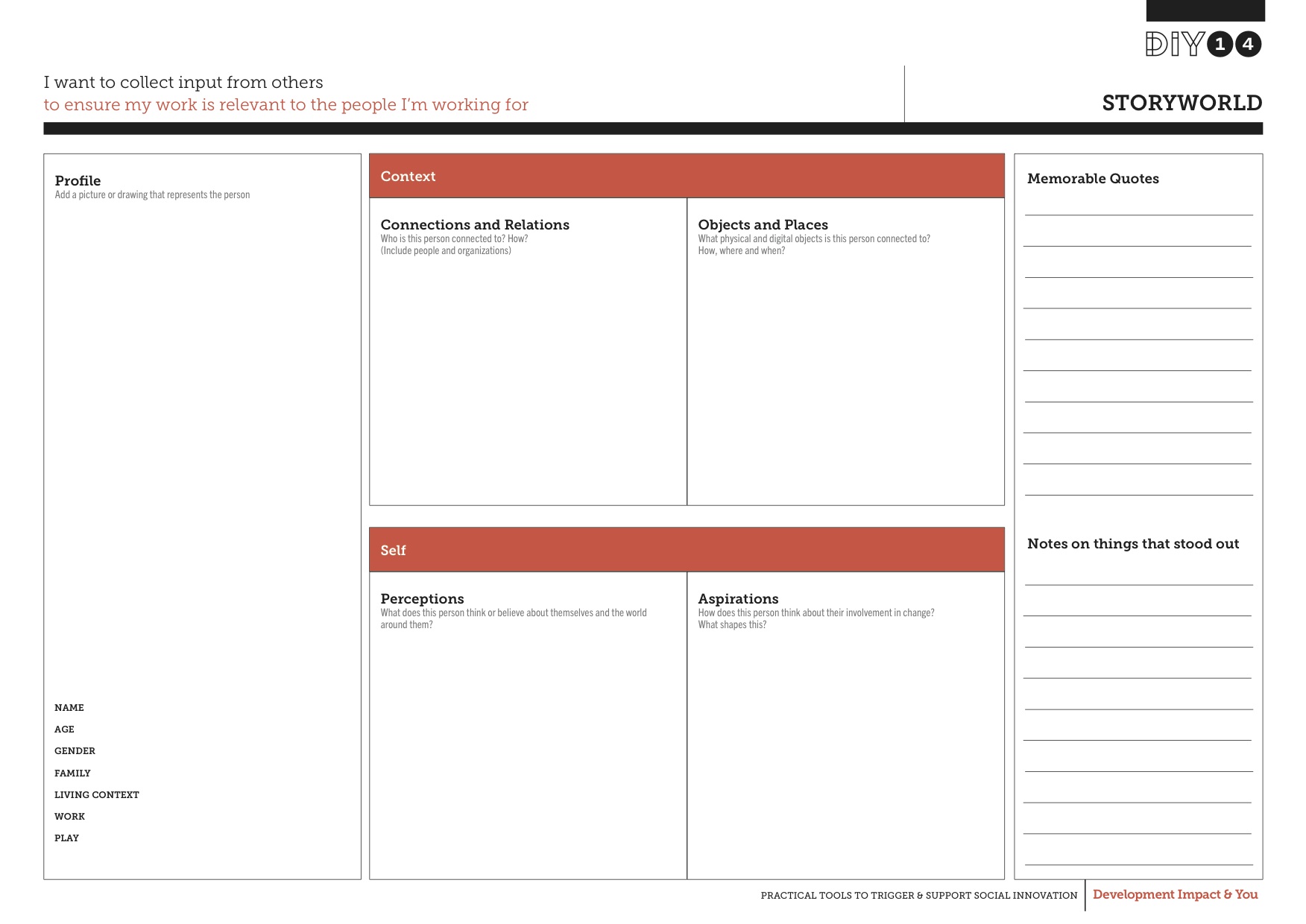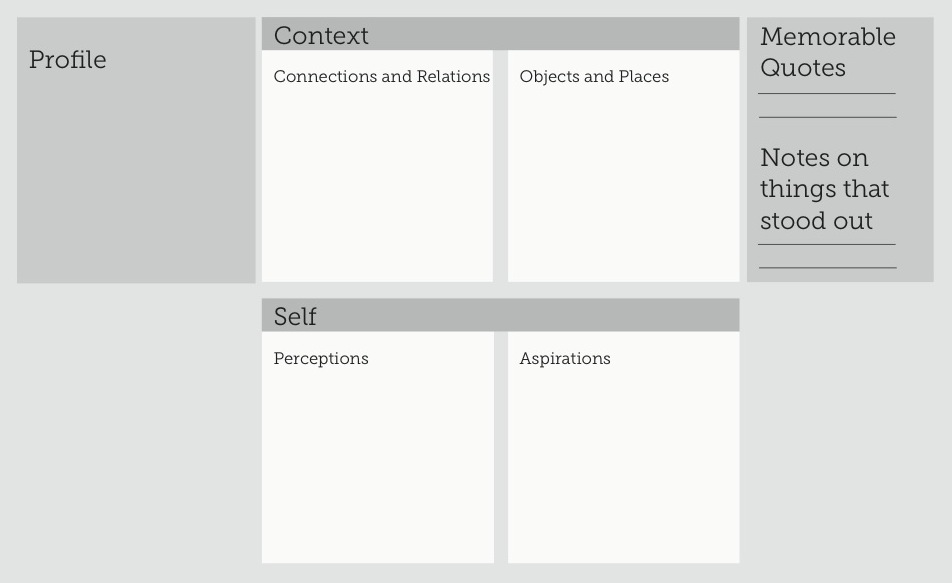Qualitative data collected through interviews and observations can be incredibly rich. A structured way of documenting this during the analysis and for communication is very important. The Storyworld tool provides a useful way to highlight the most relevant insights from your research. It helps you to do this without being overwhelmed with details, showing you how to structure your documentation so that the discussions you have afterwards are in tune with the learning requirements.
The tool enables you to bring part of a person’s world with you once you start designing a solution that is addressed to them. It allows you to create stories that make people easier to relate to – often closely matching the colour and complexity of somebody’s everyday life. These stories can be key triggers to inspire creative ideas.

